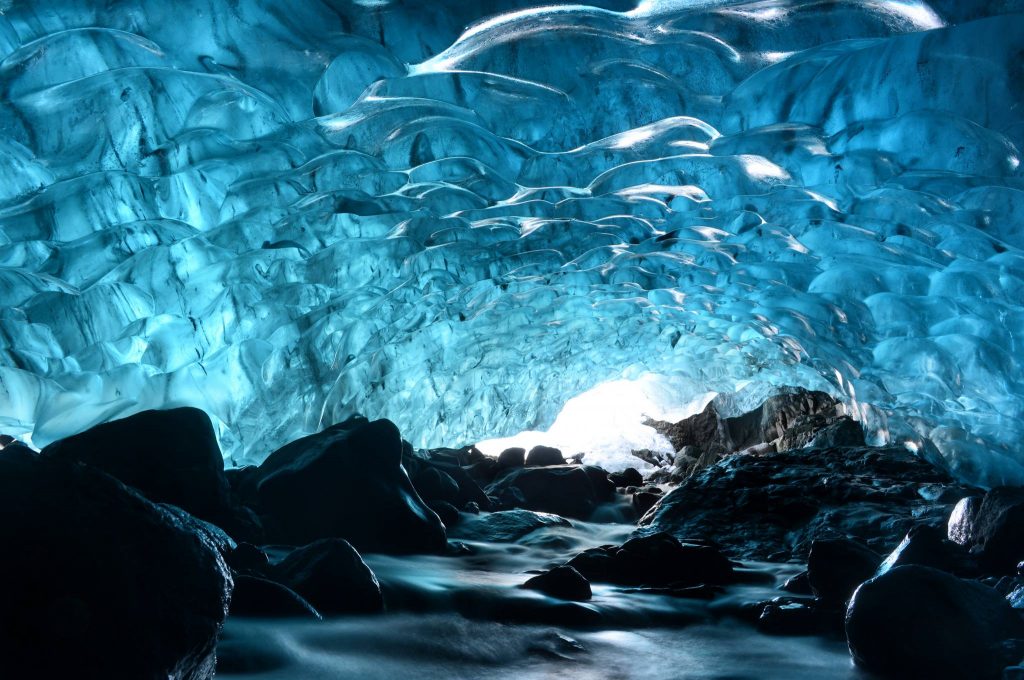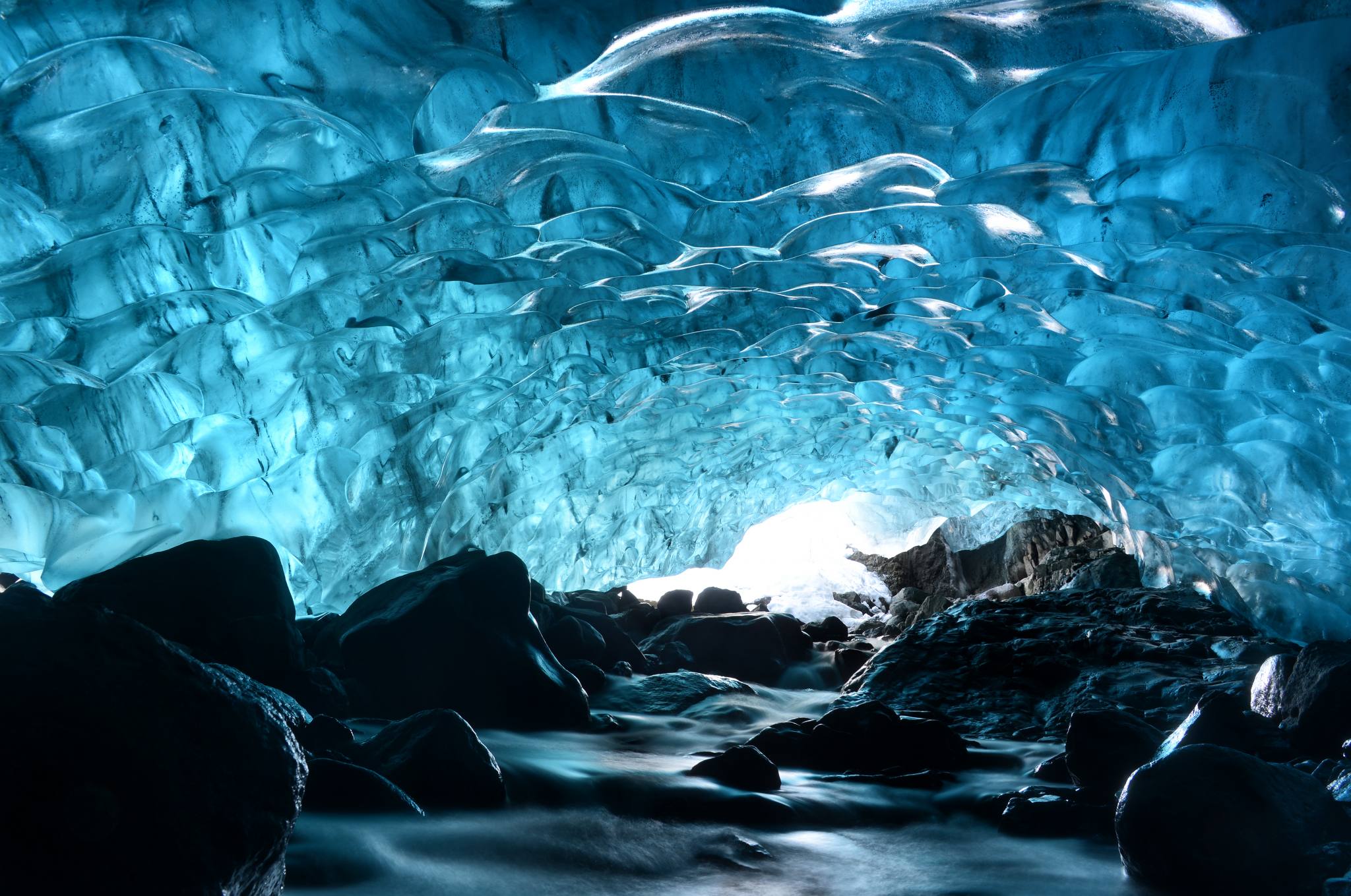[vc_row fullwidth=”true” fullwidth_content=”false”][vc_column width=”2/3″][vc_column_text css=”.vc_custom_1560249286645{margin-bottom: 0px !important;}”]
Jokulsarlon, Iceland’s crown jewel
Located in the south-east of Iceland, by Vatnajokull glacier, Jokulsarlon Glacier Lagoon is one of Iceland’s most popular and beautiful attractions. Thousands of people come every year to admire the floating icebergs and the Diamond Beach.
There are day tours from Reykjavik and longer tours to the Glacier Lagoon.

This spectacular lagoon is formed naturally, by melting water which causes blocks of ice to crumble from the glacier. These ice blocks are the beautiful icebergs floating in the Glacier Lagoon as they make their way towards the ocean.
The icebergs have a variety of shapes and colors, creating a spectacular landscape everyone falls in love with when visiting Iceland.
As they float towards the ocean, some of these blocks of ice get stuck on the shore, melting away and glistening in the sun as the Atlantic waves crash on them.
The icebergs here on this black volcanic beach shine like diamonds, this is why this location is called the Diamond Beach.
As an effect of global warming, the glacier has lately been melting much quicker than in the past, thus making the lagoon bigger year after year. The icebergs are constantly changing, making the Glacier Lagoon special and unique each time you visit, and making it the perfect spot for some amazing pictures.
Jokulsarlon is spectacular in every season but if you visit in winter, you will have a chance to explore the spectacular ice caves underneath Vatnajokull, Iceland’s and Europe’s largest glacier and you might be lucky to see the Northern Lights dancing over the Lagoon.
Glacier Ice Caves
Glacier ice caves are an ever-changing natural phenomenon forming when ice inside a glacier dissolves and forms a cavity.
But how does ice dissolve inside a glacier?
In Iceland, there is a lot of geothermal activity and most glaciers are found on top of volcanoes. The geothermal heat or volcanic eruptions very often cause the ice to melt and the melting water forms caves that we are sometimes lucky to find and explore. Because the geothermal activity is so high in Iceland, these caves form, change and disappear very quickly, even within a few weeks, so visiting one of them is certainly a unique experience.
When can you explore Ice Caves?
Ice caves in Iceland can be explored in the winter, tours usually run from the end of October to mid-March, depending on the weather conditions.
It is not safe to explore glacier ice caves in the summer, as the warmer temperatures and increased sunlight erode the existing ice caves. The increased temperatures also help the formation of new caves, by creating more meltwater that erodes the ice. In the winter, the colder temperatures harden and stabilize the newly formed ice caves, making it safer for us to explore them.
Every year, ice caves in Iceland form, change and disappear but there is one cave that has been there for quite a while, becoming famous in Iceland for its spectacular colors, the Crystal Ice Cave under Vatnajokull. Although ice caves are usually white, gray and black, this cave is known for its amazing blue colors, created by the sunlight shining through the ice. There are pictures of this spectacular blue cave all over the internet, and they are not photoshopped. Here you will see the fantastic ice formations and deep colors all around you.
How to visit the cave?
Please keep in mind that ice caves are very dangerous and you should never venture into a glacier ice cave without a guide. You need to be prepared and knowledgeable to keep safe inside an ice cave.
Guided tours to Iceland’s natural ice caves usually operate from November to March.
Our 2 Day Jokulsarlon Lagoon and Blue Ice Cave Tour is available from October 15th to March 31st.
On this tour, you will drive along the South Shore, visiting some of Iceland’s most famous attractions such as Seljalandsfoss and Skogafoss waterfalls and Vik’s black sand beaches. You will hunt for Northern Lights in the evening and, after a night in a 3 Star hotel in Skaftafell, you will have the chance to explore the beautiful Jokulsarlon Glacier Lagoon and join a Blue Ice Cave Adventure. The tour to the cave is medium-hard, you will have to walk on ice and slippery, uneven terrain for most of the journey so you need to be fit for that. It is a physically tiring tour but it is a once in a lifetime experience you will not regret.

For more info about this 2 Day Tour, check out our previous blog South Shore and Jokulsarlon Glacier Lagoon in 2 Days
If you are coming to Iceland this winter, don’t miss the chance to join a tour to Jokulsarlon and explore one of Iceland’s beautiful glacier ice caves.
Start planning and get ready to be amazed.[/vc_column_text][/vc_column][vc_column width=”1/3″][mk_custom_sidebar sidebar=”sidebar-6″][/vc_column][/vc_row][vc_row][vc_column][/vc_column][/vc_row]


